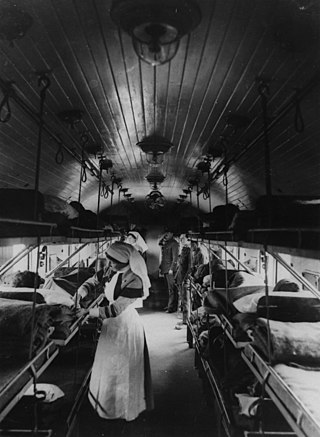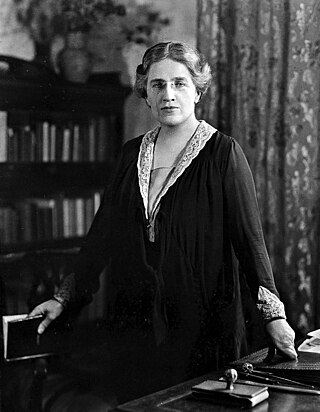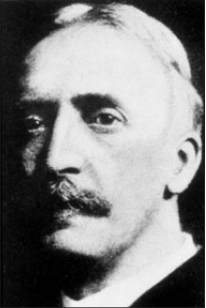Related Research Articles
The British Science Association (BSA) is a charity and learned society founded in 1831 to aid in the promotion and development of science. Until 2009 it was known as the British Association for the Advancement of Science (BA). The current Chief Executive is Hannah Russell. The BSA's mission is to get more people engaged in the field of science by coordinating, delivering, and overseeing different projects that are suited to achieve these goals. The BSA "envisions a society in which a diverse group of people can learn and apply the sciences in which they learn." and is managed by a professional staff located at their Head Office in the Wellcome Wolfson Building. The BSA offers a wide variety of activities and events that both recognise and encourage people to be involved in science. These include the British Science Festival, British Science Week, the CREST Awards, For Thought, The Ideas Fund, along with regional and local events.

Podiatry, or podiatric medicine and surgery, is a branch of medicine devoted to the study, diagnosis, and treatment of disorders of the foot, ankle and lower limb. The healthcare professional is known as a podiatrist. The US podiatric medical school curriculum includes lower extremity anatomy, general human anatomy, physiology, general medicine, physical assessment, biochemistry, neurobiology, pathophysiology, genetics and embryology, microbiology, histology, pharmacology, women's health, physical rehabilitation, sports medicine, research, ethics and jurisprudence, biomechanics, general principles of orthopedic surgery, plastic surgery, and foot and ankle surgery.

Saint Mary's Hospital is a hospital in Manchester, England. It is part of Manchester University NHS Foundation Trust. Founded in 1790, St Mary's provides a range of inter-related services specifically for women and children. In 1986, St Mary's Sexual Assault Referral Centre was the first sexual assault referral centre (SARC) to open in the UK.

Manchester Royal Infirmary (MRI) is a large NHS teaching hospital in Chorlton-on-Medlock, Manchester, England. Founded by Charles White in 1752 as part of the voluntary hospital movement of the 18th century, it is now a major regional and national medical centre. It is the largest hospital within Manchester University NHS Foundation Trust, and based on its Oxford Road Campus in South Manchester where it shares a site with the Royal Manchester Children's Hospital, Manchester Royal Eye Hospital and Saint Mary's Hospital as well as several other educational and research facilities. The Hospital is also a key site for medical educational within Manchester, serving as a main teaching hospital for School of Medical Sciences, University of Manchester.

Bertrand Edward Dawson, 1st Viscount Dawson of Penn, was a physician to the British Royal Family and President of the Royal College of Physicians from 1931 to 1937. He is known for his responsibility in the death of George V, who under his care was surreptitiously injected with a fatal dose of cocaine and morphine to hasten his death, without obtaining any prior patient consent and in contravention of the law at the time, possibly constituting or amounting to murder and high treason.

The Ancoats Hospital and Ardwick and Ancoats Dispensary was a large inner-city hospital located in Ancoats, to the north of the city centre of Manchester, England. It was built in 1875, replacing the Ardwick and Ancoats Dispensary that had existed since 1828. The building is now Grade II listed.
Inspector-General Belgrave Ninnis was a Royal Navy surgeon, surveyor, Arctic explorer, and leading Freemason, from London. He graduated as a Doctor of Medicine from the University of St Andrews in 1861, and the same year entered the navy as an Assistant Surgeon. From 1864 to 1866, Ninnis served as part of a surveying expedition to the Northern Territory of South Australia, helping to chart the area to the west of the Adelaide River and returning biological specimens to Adelaide for study. In 1867 Ninnis was appointed to Greenwich Hospital, and in 1875 he joined the British Arctic Expedition under Captain Sir George Nares, serving as Staff-Surgeon on HMS Discovery. When disease spread among the expedition's dogs, Ninnis was charged with investigating the cause; his findings later formed the basis of a published work. At the conclusion of the expedition in 1876 he received the Arctic Medal for his service, and was promoted to Fleet-Surgeon.

The Territorial Force Nursing Service (TFNS) was established in 1908, part of the reform of the British auxiliary forces introduced by Richard Haldane which created the Territorial Force. Nurses with at least three years of training were able to volunteer for the service, and facilities comprised 23 large buildings earmarked for use as hospitals in the event of war. The TFNS was augmented by the affiliation of Voluntary Aid Detachments. On the outbreak of the First World War, the hospitals were commissioned and up to 2,784 nurses mobilised to staff them. By the end of the war, up to 8,140 nurses had served with the TFNS, 2,280 of them in hospitals and casualty clearing stations abroad. After the war, the TFNS became the Territorial Army Nursing Service in line with the reconstitution of the Territorial Force as the Territorial Army.

Louisa Martindale was an English physician, surgeon and writer. She also served as magistrate on the Brighton bench, was a prison commissioner and a member of the National Council of Women. She served with the Scottish Women's Hospitals at Royaumont Abbey in France in World War I, and as a surgeon in London in World War II. Through her writings she promoted medicine as a career for women.
Sir Victor Ewings Negus, MS, FRCS was a British surgeon who specialised in laryngology and also made fundamental contributions to comparative anatomy with his work on the structure and evolution of the larynx. He was born and educated in London, studying at King's College School, then King's College London, followed by King's College Hospital. The final years of his medical training were interrupted by the First World War, during which he served with the Royal Army Medical Corps. After the war, he qualified as a surgeon and studied with laryngologists in France and the USA before resuming his career at King's College Hospital where he became a junior surgeon in 1924.
Peter Allen was a Canadian surgeon who played a leading role in improving cardiac surgery techniques. Along with Dr. Philip Ashmore, Dr. W.G. (Bill) Trapp and Dr. Ross Robertson, he performed the first Open Heart Surgery in British Columbia on 29 October 1957 at Vancouver General Hospital, by closing an Atrial Septal Defect (ASD) in 9 year old John Evans, using Cardiopulmonary Bypass (CPB).

Charles Frederick William Illingworth was a British surgeon who specialised in gastroenterology. Along with a range of teaching and research interests, he wrote several surgical textbooks, and played a leading role in university and medical administration.

Sir Anthony Alfred Bowlby, 1st Baronet was a British Army officer, surgeon and pathologist.

Sir Harry Platt, 1st Baronet, FRCS, KStJ was an English orthopaedic surgeon, president of the Royal College of Surgeons of England (1954–1957). He was a founder of the British Orthopaedic Association, of which he became president in 1934–1935.

Thomas Turner, FRCS, FLS, was an English surgeon known primarily for his involvement in developing medical education outside its then traditional base of London. He established a medical school in Manchester and was both a Fellow of the Royal College of Surgeons of England and the Linnean Society of London.

Walter Whitehead, FRCSE, FRSE, was a surgeon at various hospitals in Manchester, England, and held the chair of Clinical Surgery at the Victoria University of Manchester. He was president of the British Medical Association in 1902. He once claimed that knowledge of anatomy was an impediment to being a good surgeon but was himself a bold, innovative practitioner of international repute. His procedure for excision of the tongue using scissors and his formulation of a related ointment became a standard treatment, as did a procedure he developed for the treatment of haemorrhoids.

Norman Shanks Kerr was a Scottish physician and social reformer who is remembered for his work in the British temperance movement. He originated the Total Abstinence Society and was founder and first president of the Society for the Study and Cure of Inebriety which was founded in 1884.

Norah Henriette Schuster FRCPath was a British pathologist and the first woman to take the pre-clinical medical course at the University of Cambridge. She was the first woman to be appointed as a doctor at the Manchester Royal Infirmary and, in 1950, the first female president of the Association of Clinical Pathologists.

James Henderson Nicoll FRCS(G), JP was a Scottish paediatric surgeon and professor of surgery at Anderson's University. He was a pioneer of pediatrics, particularly regarding the care of children both in the hospital and after discharge. Nicoll was most notable for developing a surgical cure for pyloric stenosis and outpatient care of children with spina bifida, and was known as the "father of day surgery".
Arthur Vernon Davies OBE was a British surgeon and politician, who served as the Conservative member of parliament for Royton between 1924 and 1931.
References
- ↑ "Archive of the Association of Certifying Factory Surgeons". JISC Archives Hub. Retrieved 8 November 2022.
- ↑ "Archive of the Association of Certifying Factory Surgeons". Manchester University. Retrieved 9 November 2016.
- ↑ "Certifying Factory Surgeons". British Medical Journal. 2 (826): 563–567. 28 October 1876. JSTOR 25243153.
- ↑ "Archives of the Association of Certifying Factory Surgeons". University of Manchester. Archived from the original on 10 November 2016. Retrieved 9 November 2016.
- ↑ "Association of Certifying Factory Surgeons". British Medical Journal: 1603. 16 December 1911.
- ↑ "Association of Certifying Factory Surgeons". British Medical Journal: 335. 6 March 1920.